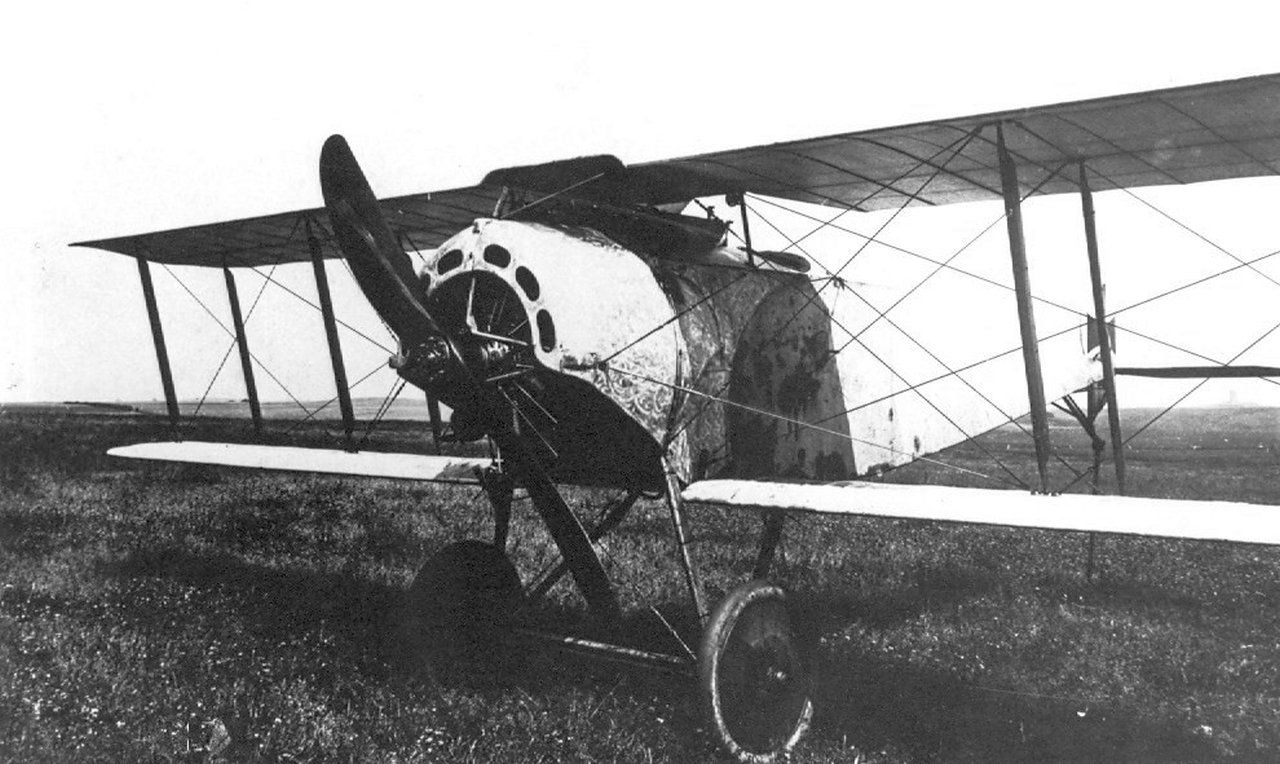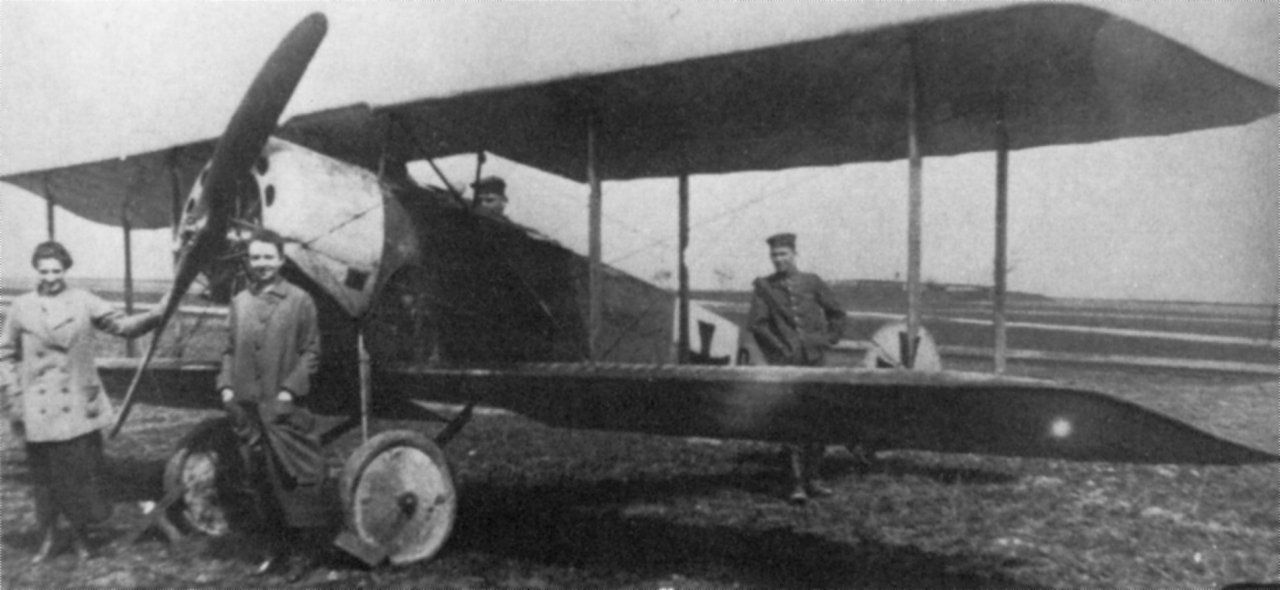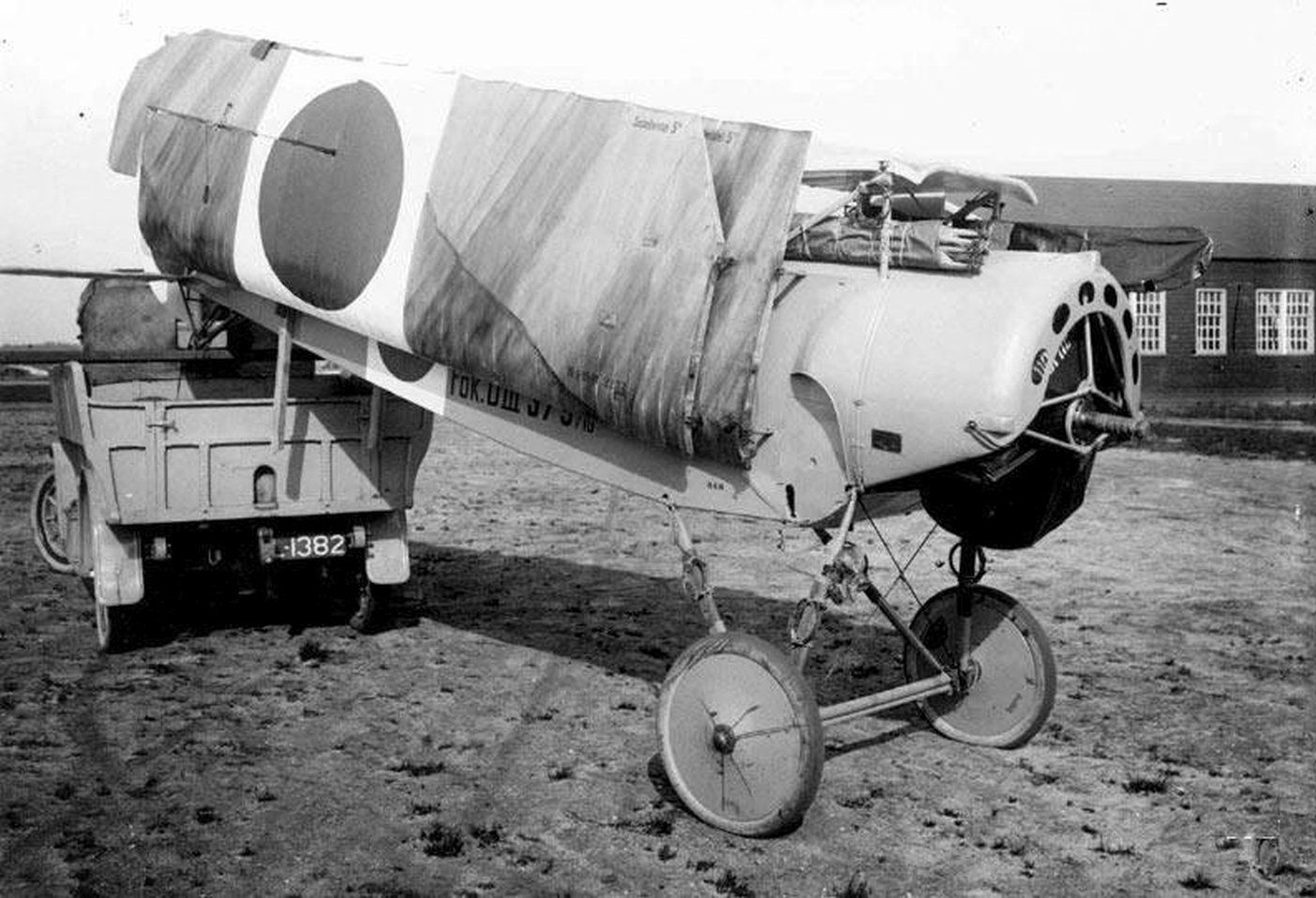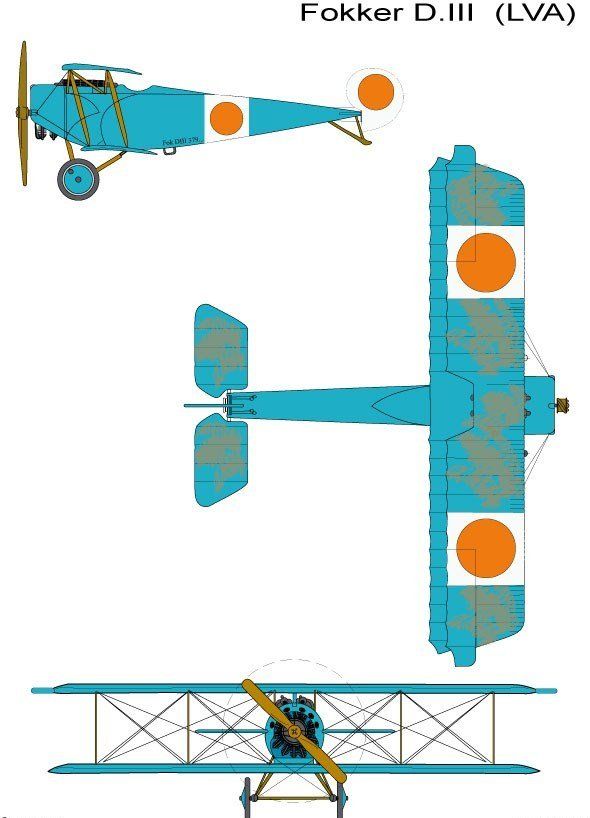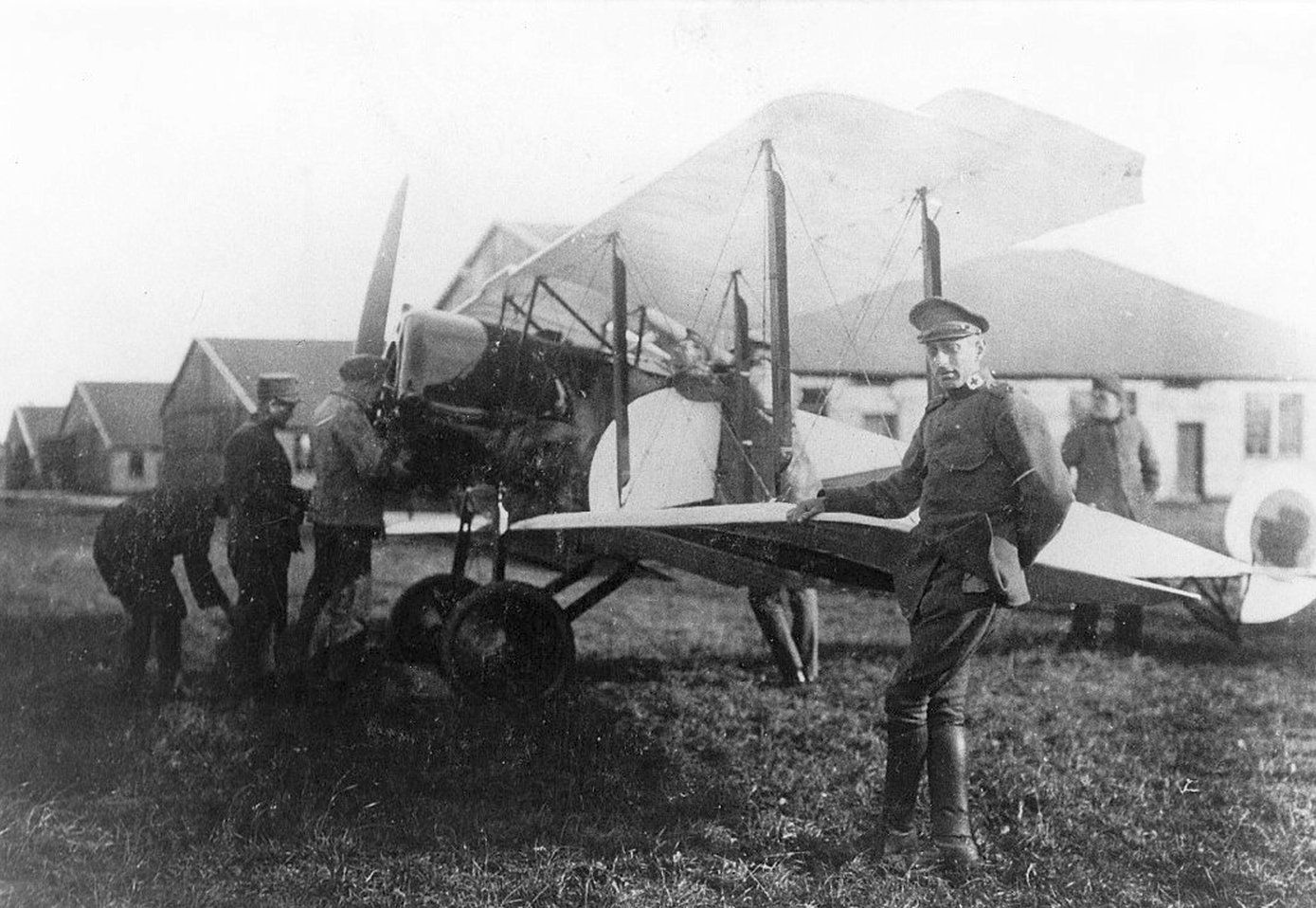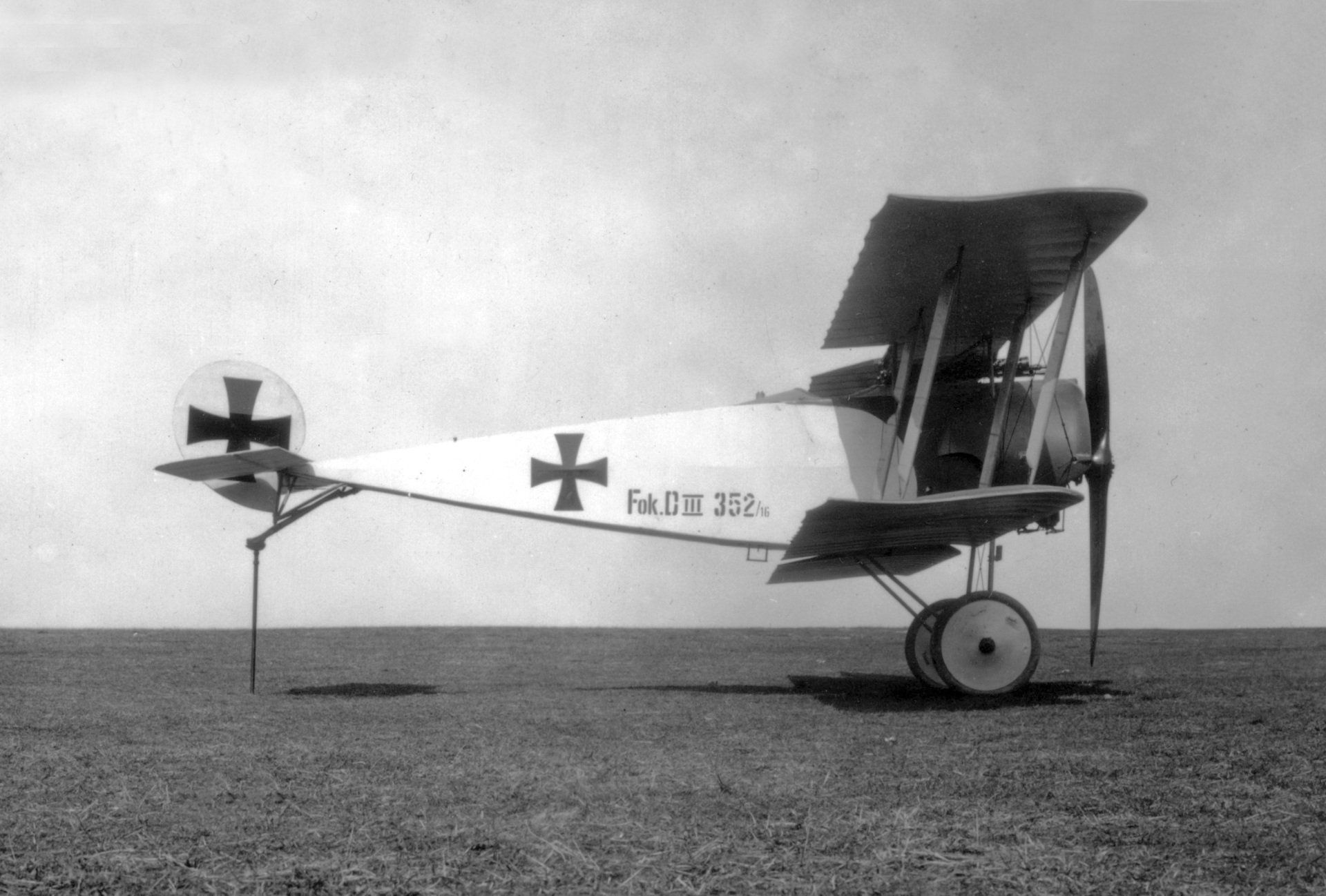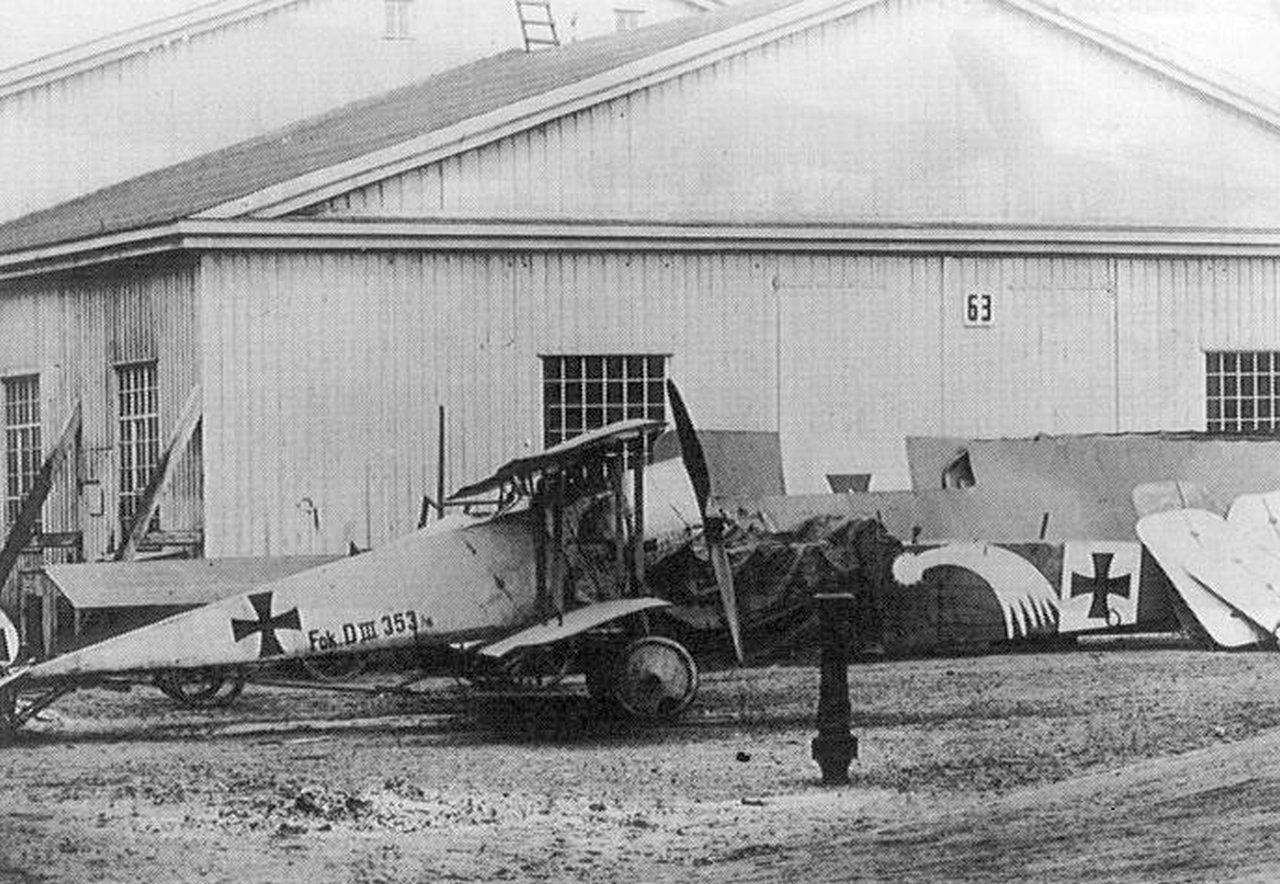The Fokker D.III
The Fokker D.III was a direct development of the Fokker D.I and Fokker D.II.
In fact, the Fokker D.III was a modified D.II with a 160 hp Oberursel U III rotary engine with a double row of two times seven cylinders and a wing area of 20 m2.
The Fokker D.I and Fokker D.II had a wing area of 22 and 18 m2 respectively.
Initially the D.III had no ailerons, but was equipped for wing twisting. Later they were equipped with ailerons, which greatly improved manoeuvrability.
The D.III also experimented with different propellers.
The D.III had significantly better performance than both of its predecessors.
On 20 July 1916 the D.III prototype was tested at Adlershof and after approval fifty examples were ordered for the German Army by the “Inspektion der Fliegertruppen”, Idflieg.
The Idflieg was the agency of the German Reich that oversaw German military aviation prior to and during World War I.
At the end of August 1916, the famous German war pilot Oswald Boelcke received a Fokker D.III.
Initially he was very taken with the aircraft and achieved six more victories with it during the first few weeks.
But Boelcke did find that the aircraft was slower than the English Sopwith 1½ Strutter and much slower than the French Nieuport Scout.
Reason for him to switch to the German Albatros D.I because it was a lot faster than the Fokker D.III.
The top speed of the D.III was only 160 km/h. This was partly due to the poor performance of the double-star rotary engine. The rear row of seven cylinders could not be cooled well and therefore the engine could not be fully loaded.
The D.III was withdrawn from the front line as a result of Boelcke's advice and was subsequently deployed on the home front, including for pilot training.
From a number of D.IIIs put up for sale by the German army, the Dutch LVA, Aviation Department, purchased ten unarmed examples.
The D.IIIs entered Dutch service on 1 October 1917, and remained in use until 1921.
A total of two hundred and ten D.IIIs were built.
Click on the photo to enlarge the photo

